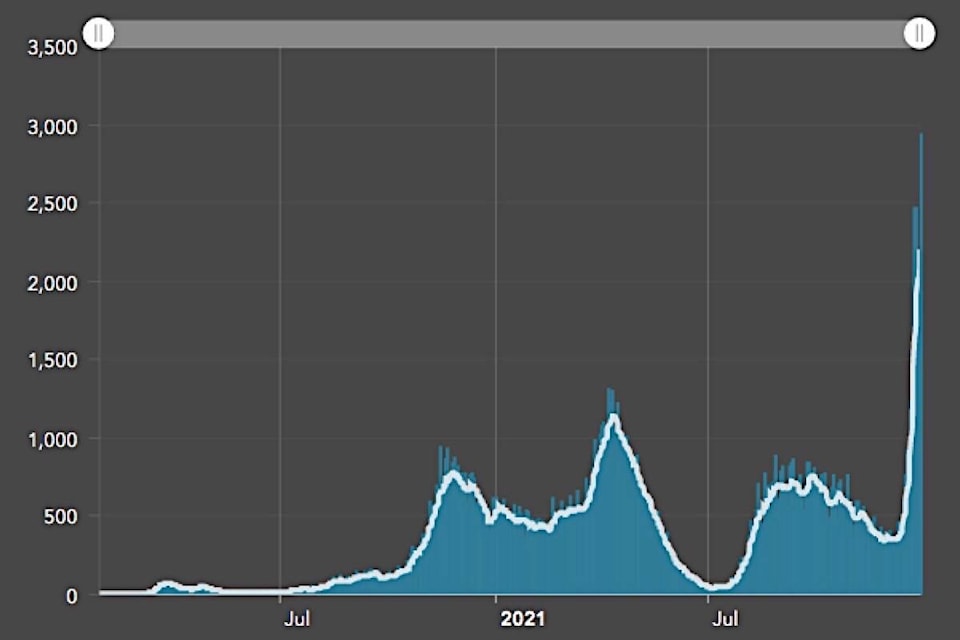As B.C.’s daily confirmed COVID-19 cases soar to 3,000 in the fifth wave of the pandemic, public health officials are grappling with a spread of infection that has far exceeded their ability to measure it directly.
Provincial health officer Dr. Bonnie Henry says the daily totals confirmed by lab testing have always been only a fraction of the actual cases, with most testing focused on likely exposures and clusters found by the hundreds of contact tracers the province has employed for nearly two years. Often portrayed as the total infections for a given day, test results are more accurately described as a “surveillance tool” that guides restrictions and gauges the burden on hospitals.
“So it is consistent and that is one of the hallmarks of a surveillance tool, that it tells you the trends over time using that methodology,” Henry said at a briefing from Vancouver Dec. 29. “All along, we know that the daily numbers are not reflecting everyone who has COVID in our province. That has been the case from the very beginning and at different periods of time, the actual true number can be varied by four or five times what we are seeing in terms of PCR testing.”
Hospital and intensive care admissions are the key indicators of illness, and as of this week they have not risen along with case counts. Henry said Quebec was about a week ahead of B.C. in the Omicron surge, and is seeing increased hospital admissions as the infection rate shoots up.
RELATED: B.C. schools to have staggered restart in January
RELATED: Omicron incubation rate twice as fast as Delta
As of Dec. 29 there were 193 people in B.C. hospitals with active coronavirus infections, 66 of them in intensive care, which is consistent with the weeks prior to the latest surge of infections. Internationally, the replacement of Delta with Omicron variant has not shown corresponding severe illness rise.
“This week we are seeing that hospitalizations and critical care are holding steady, but we still are having impacts,” Henry said. “And uncertainty is still a challenge for us. But we will know more in a week.”
With test centres now unable to keep up with those seeking confirmation of symptoms or contacts with confirmed cases, public health advice has shifted to self-isolation for those experiencing milder symptoms. That has caused absenteeism from work to rise quickly, and forced a delayed return to public schools for all but children of health care and other essential workers until Jan. 10.
Health Minister Adrian Dix said the “positivity rate” for test results, the percentage of molecular PCR tests that come back positive, has jumped to more than 14 per cent in all health regions as Omicron has taken hold. The vast majority of new B.C. cases are being detected in the Fraser Health and Vancouver Coastal Health regions, but the increase is in all five regions of the province, he said.
@tomfletcherbc
tfletcher@blackpress.ca
Like us on Facebook and follow us on Twitter.
